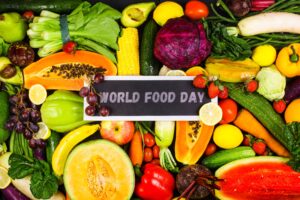Food technology has dramatically evolved over the past few decades, revolutionizing the way we produce, process, and consume food. These advancements have profound impacts on population health, the fight against starvation, and the overall efficiency of food systems.
Advancements in Food Technologies
The development of modern food technologies has significantly transformed agricultural practices and food production. Innovations such as genetically modified organisms (GMOs), precision farming, and vertical agriculture have enhanced crop yields and food quality.
- Genetically Modified Organisms (GMOs): GMOs involve altering the genetic makeup of crops to make them more resistant to pests, diseases, and environmental conditions. This technology has led to increased crop yields and reduced reliance on chemical pesticides.
- Precision Farming: Utilizing GPS technology and data analytics, precision farming allows for more efficient use of resources like water, fertilizers, and pesticides. This leads to higher productivity and lower environmental impact.
- Vertical Farming: Growing crops in vertically stacked layers within controlled environments reduces the need for large land areas and allows year-round production, enhancing food security in urban areas.
Impact on Population Health
The advancements in food technology have had a notable impact on population health. By improving the nutritional quality of food and ensuring its safety, modern technologies help in preventing malnutrition and foodborne illnesses.
The development of fortified foods, which are enriched with essential vitamins and minerals, plays a critical role in addressing nutritional deficiencies. Additionally, the implementation of advanced food safety measures, such as rapid pathogen detection systems, ensures that the food supply is safe for consumption.
Fighting Starvation and Food Insecurity
Modern food technologies are crucial in combating starvation and food insecurity, particularly in regions prone to food shortages. Innovations in storage and preservation, such as cold chain logistics and advanced packaging, extend the shelf life of perishable goods, reducing food waste and ensuring a steady supply.
- Cold Chain Logistics: This technology involves a temperature-controlled supply chain that maintains the quality and safety of perishable products from production to consumption.
- Advanced Packaging: Techniques such as vacuum packaging and modified atmosphere packaging (MAP) help preserve food by inhibiting the growth of spoilage organisms and maintaining freshness.
Several case studies highlight the success of modern food technologies in addressing global food challenges. For instance, the adoption of GMOs in countries like India and Brazil has led to substantial increases in crop production and farmer incomes. Similarly, vertical farming initiatives in cities like Singapore and New York have made urban agriculture more viable, contributing to local food security.
The Future of Food Technologies
New technologies such as lab-grown meat, blockchain for supply chain transparency and agricultural practices based on artificial intelligence have the potential to further transform the food industry.
For example, lab-grown meat provides a sustainable alternative to traditional animal farming, potentially reducing the environmental impact of meat production. Blockchain technology can increase traceability and transparency in the food supply chain, providing consumers with access to reliable information about the origin and safety of their food. Agricultural techniques based on artificial intelligence can optimize farming operations, predict crop yields and manage resources more efficiently.

